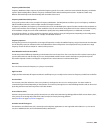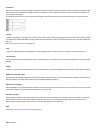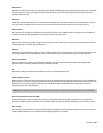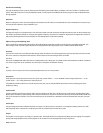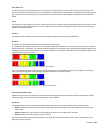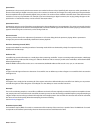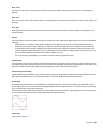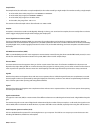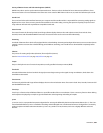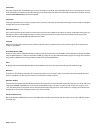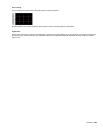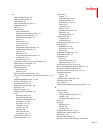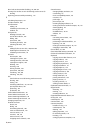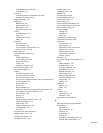Sample Value
The Sample Value (also referred to as sample amplitude) is the number stored by a single sample. The number stored by a single sample:
• In 32-bit audio, these values range from -2147483648 to 2147483647.
• In 24-bit audio, they range from -8388608 to 8388607.
• In 16-bit audio, they range from -32768 to 32767.
• In 8-bit audio, they range from -128 to 127.
The maximum allowed sample value is often referred to as 100% or 0 dB.
Sampler
A sampler is a device that records sounds digitally. Although, in theory, your sound card is a sampler, the term usually refers to a device
used to trigger and play back samples while changing the sample pitch.
Secure Digital Music Initiative (SDMI)
The Secure Digital Music Initiative (SDMI) is a consortium of recording industry and technology companies organized to develop
standards for the secure distribution of digital music. The SDMI specification will answer consumer demand for convenient accessibility
to quality digital music, enable copyright protection for artists' work, and enable technology and music companies to build successful
businesses.
SCSI MIDI Device Interface (SMDI)
SMDI is a standardized protocol for music equipment communication. Instead of using the slower standard MIDI serial protocol, it uses a
SCSI bus for transferring information. Because of its speed, SMDI is often used for sample dumps.
Shortcut Menu
A context-sensitive menu that appears when you click on certain areas of the screen. The functions available in the shortcut menu
depend on the object being clicked on as well as the state of the program. As with any menu, you can select an item from the shortcut
menu to perform an operation. Shortcut menus are used frequently in Sound Forge software for quick access to many commands.
Sign-Bit
Data that has positive and negative values and uses zero to represent silence. Unlike the signed format, twos complement is not used.
Instead, negative values are represented by setting the highest bit of the binary number to one without complementing all other bits.
This is a format option when opening and saving RAW sound files.
Signed
Data that has positive and negative twos complement values and uses zero to represent silence. This is a format option when opening
and saving raw sound files.
Signal-to-Noise Ratio
The signal-to-noise ratio (SNR) is a measurement of the difference between a recorded signal and noise levels. A high SNR is always the
goal.
The maximum signal-to-noise ratio of digital audio is determined by the number of bits per sample. In 16-bit audio, the signal to noise
ratio is 96 dB, while in 8-bit audio its 48 dB. However, in practice this SNR is never achieved, especially when using low-end electronics.
Small Computer Systems Interface (SCSI)
SCSI is a standard interface protocol for connecting devices to your computer. The SCSI bus can accept up to seven devices at a time
including CD ROM drives, hard drives and samplers.
356
| APPENDIX E




